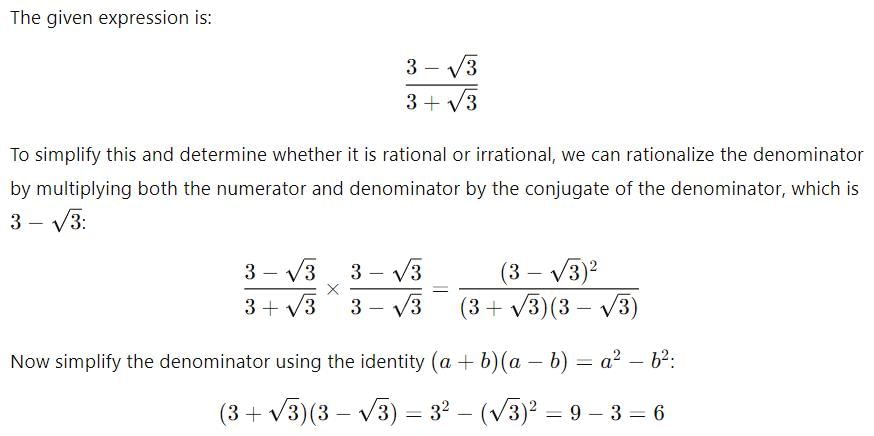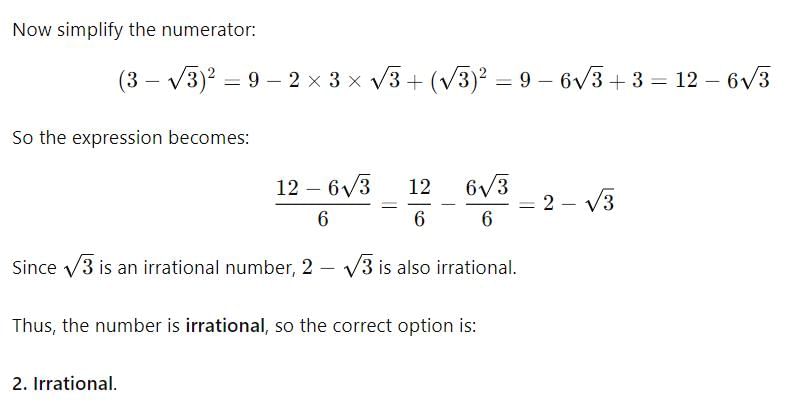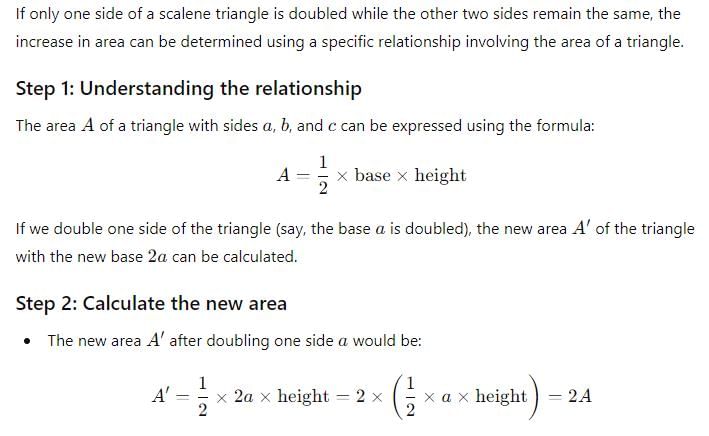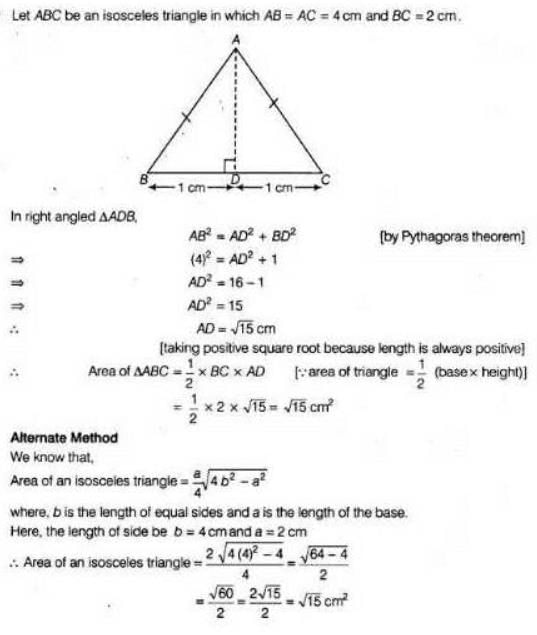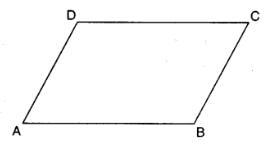All Exams >
CAT >
Additional Study Material for CAT >
All Questions
All questions of Class 9 for CAT Exam
Which of the following is an rational number?
- a)0.323223222322223…….
- b)√180
- c)√31
- d)√196
Correct answer is option 'D'. Can you explain this answer?
Which of the following is an rational number?
a)
0.323223222322223…….
b)
√180
c)
√31
d)
√196
|
|
Zachary Foster answered |
- A rational number is a number that can be expressed as a fraction where both the numerator and denominator are integers.
- √196 is a rational number because it simplifies to 14/1, which is a fraction where both the numerator and denominator are integers.
- Options B and C are irrational numbers because they cannot be expressed as fractions.
- Option A is a repeating decimal, which can be rational if it eventually settles into a repeating pattern, but without further information, it is not clear if this is the case.
- √196 is a rational number because it simplifies to 14/1, which is a fraction where both the numerator and denominator are integers.
- Options B and C are irrational numbers because they cannot be expressed as fractions.
- Option A is a repeating decimal, which can be rational if it eventually settles into a repeating pattern, but without further information, it is not clear if this is the case.
The point (–2, –3) belongs to Quadrant :- a)Q1
- b)Q2
- c)Q3
- d)Q4
Correct answer is option 'C'. Can you explain this answer?
The point (–2, –3) belongs to Quadrant :
a)
Q1
b)
Q2
c)
Q3
d)
Q4
|
|
Zachary Foster answered |
The point (-2, -3) is located in the third quadrant. This is because both the x coordinate and the y coordinate are negative, which are the characteristics of points in Quadrant III.
The correct answer is: C: Q3
The correct answer is: C: Q3
Between 3 and 4 there are- a)10,000 rational numbers
- b)1000 rational numbers
- c)Infinitely many rational numbers
- d)500 rational numbers
Correct answer is option 'C'. Can you explain this answer?
Between 3 and 4 there are
a)
10,000 rational numbers
b)
1000 rational numbers
c)
Infinitely many rational numbers
d)
500 rational numbers
|
|
Anita Menon answered |
There is no single number between 3 and 4, there is an infinite amount of numbers. If you are asking for INTEGERS, there are none. If not, you can have unlimited numbers between 3 and 4. For example, a number could be 3.0000000000000000005 or 3.9999999999999997.
In the adjoining figure, AB ║ CD and AB ║ EF. The value of x is :-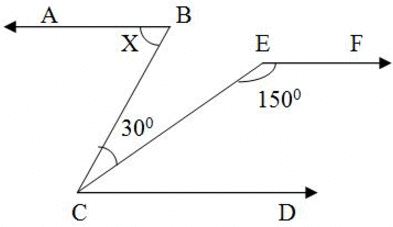
- a)400
- b)600
- c)700
- d)500
Correct answer is option 'B'. Can you explain this answer?
In the adjoining figure, AB ║ CD and AB ║ EF. The value of x is :-
a)
400
b)
600
c)
700
d)
500

|
Skyhigh Academy answered |
Given, AB ║ CD and AB ║ EF
so CD || EF
which means ∠ECD + ∠CEF = 1800 (corresponding angles)
∠ECD = 180 - 150 = 300
since AB || CD so
∠ABC= ∠BCD (alternate interior angles)
∠ABC = 30 + ∠ECD = 30 + 30 = 600
The remainder obtained when the polynomial p(x) is divided by (b – ax) is- a)

- b)

- c)

- d)

Correct answer is option 'B'. Can you explain this answer?
The remainder obtained when the polynomial p(x) is divided by (b – ax) is
a)
b)
c)
d)
|
|
Meera Rana answered |
ANSWER :- b
Solution :- b-ax=0
b=ax
b/a=x
i.e. remainder is p(b/a)
Which of the following is a rational number?- a)2√3
- b)0
- c)π
- d)1+√3
Correct answer is option 'B'. Can you explain this answer?
Which of the following is a rational number?
a)
2√3
b)
0
c)
π
d)
1+√3
|
|
Abhay Yadav answered |
Rational Number
A rational number is a number that can be expressed in the form of p/q where p and q are integers and q is not equal to zero.
Given Options
a) 23 - This is an integer and can be written as 23/1. It is a rational number.
b) 0 - This can be written as 0/1. It is a rational number.
c) √2 - This is an irrational number as it cannot be expressed in the form of p/q where p and q are integers.
d) 1 3 - This is a mixed fraction and can be written as 4/3. It is a rational number.
Conclusion
Hence, the only rational number among the given options is 0.
A rational number is a number that can be expressed in the form of p/q where p and q are integers and q is not equal to zero.
Given Options
a) 23 - This is an integer and can be written as 23/1. It is a rational number.
b) 0 - This can be written as 0/1. It is a rational number.
c) √2 - This is an irrational number as it cannot be expressed in the form of p/q where p and q are integers.
d) 1 3 - This is a mixed fraction and can be written as 4/3. It is a rational number.
Conclusion
Hence, the only rational number among the given options is 0.
 is equal to :-
is equal to :-
- a)1
- b)(0.83)3 + (0.17)3
- c)0
- d)None of these
Correct answer is option 'A'. Can you explain this answer?
a)
1
b)
(0.83)3 + (0.17)3
c)
0
d)
None of these

|
Shalini Shahi answered |
Yes answer is 1. a=0.83 ,b=0.17 0.83×0.83×0.83 +0.17×0.17×0.17. / 0.83× 0.83+0.83× 0.17+0.17×0.17. = formula = a³+b³=( a+b)(a²-ab +b²) / a²-ab+ b² = cut the up and down a²-ab +b² = only a+b here ,add a+b =0.83+0.17= 1.00= 1, correct answer a) 1..
If two parallel lines are intersected by a transversal then the bisectors of the interior angles form a :- a)rhombus
- b)parallogram
- c)Square
- d)Rectangle
Correct answer is option 'D'. Can you explain this answer?
If two parallel lines are intersected by a transversal then the bisectors of the interior angles form a :
a)
rhombus
b)
parallogram
c)
Square
d)
Rectangle

|
Arya Roy answered |
if two parallel lines are intersected by a transversal then prove that bisectors of the interior angles form a triangle.if two parallel lines are intersected by a transversal then prove that bisectors of the interior angles form a rectangle.
The value of the polynomial 5x−4x2+3, when x = −1 is
- a)- 6
- b)1
- c)9
- d)-1
Correct answer is option 'A'. Can you explain this answer?
The value of the polynomial 5x−4x2+3, when x = −1 is
a)
- 6
b)
1
c)
9
d)
-1
|
|
Zachary Foster answered |
It is given that
p(x) = 5x - 4x² + 3
We have to find the value when x = -1
p(-1) = 5(-1) - 4(-1)² + 3
By further calculation
p(-1) = -5 - 4 + 3
So we get
p(-1) = -9 + 3
p(-1) = -6
Therefore, the value is -6.
The area of a triangle with base 8 cm and height 10 cm is
- a)20 cm2
- b)18 cm2
- c)80 cm2
- d)40 cm2
Correct answer is option 'D'. Can you explain this answer?
The area of a triangle with base 8 cm and height 10 cm is
a)
20 cm2
b)
18 cm2
c)
80 cm2
d)
40 cm2
|
|
Samaira Kapoor answered |
Given:
Base of the triangle = 8 cm
Height of the triangle = 10 cm
To find:
Area of the triangle
Formula:
Area of the triangle = 1/2 × base × height
Solution:
Substituting the given values in the formula, we get
Area of the triangle = 1/2 × 8 cm × 10 cm
Area of the triangle = 40 cm²
Therefore, the correct option is (d) 40 cm².
Base of the triangle = 8 cm
Height of the triangle = 10 cm
To find:
Area of the triangle
Formula:
Area of the triangle = 1/2 × base × height
Solution:
Substituting the given values in the formula, we get
Area of the triangle = 1/2 × 8 cm × 10 cm
Area of the triangle = 40 cm²
Therefore, the correct option is (d) 40 cm².
A point of the form (0, b) lies on
- a)x- axis
- b)quadrant III
- c)quadrant I
- d)y- axis
Correct answer is option 'D'. Can you explain this answer?
A point of the form (0, b) lies on
a)
x- axis
b)
quadrant III
c)
quadrant I
d)
y- axis
|
|
Rati Joshi answered |
Explanation:
The point (0, b) is a point in the coordinate plane, where the first coordinate (x-coordinate) is 0, and the second coordinate (y-coordinate) is b.
To determine on which axis or quadrant this point lies, we need to examine the values of the coordinates:
- The x-coordinate is 0, which means the point lies on the y-axis.
- The y-coordinate is b, which means the point is at a distance of b units from the origin, in the positive y-direction (since b is positive).
Therefore, the point (0, b) lies on the y-axis.
Option D, which says "y-axis", is the correct answer.
The point (0, b) is a point in the coordinate plane, where the first coordinate (x-coordinate) is 0, and the second coordinate (y-coordinate) is b.
To determine on which axis or quadrant this point lies, we need to examine the values of the coordinates:
- The x-coordinate is 0, which means the point lies on the y-axis.
- The y-coordinate is b, which means the point is at a distance of b units from the origin, in the positive y-direction (since b is positive).
Therefore, the point (0, b) lies on the y-axis.
Option D, which says "y-axis", is the correct answer.
Class mark of a particular class is 9.5 and the class size is 6, then the class interval is- a)15.5-27.5
- b)12.5-18.5
- c)3.5-15.5
- d)6.5-12.5
Correct answer is option 'D'. Can you explain this answer?
Class mark of a particular class is 9.5 and the class size is 6, then the class interval is
a)
15.5-27.5
b)
12.5-18.5
c)
3.5-15.5
d)
6.5-12.5
|
|
Anita Menon answered |
Class mark = 9.5
=> Upper limit + Lower limit / 2 = 9.5
=> u + l = 19 -------(1)
Class mark = 6
=> u - l = 6 --------(2)
On adding equation 1 and 2, we get
2u = 25
=> u = 12.5
l = 6.5
Class interval is ( 6.5 - 12.5)
 is equal to :-
is equal to :-
- a)2n+1
- b)-2n+1 + (1/8)
- c)(9/8 - 2n)
- d)1
Correct answer is option 'D'. Can you explain this answer?
a)
2n+1
b)
-2n+1 + (1/8)
c)
(9/8 - 2n)
d)
1

|
EduRev Class 9 answered |
2n(24-2) + 2-3
2nx2x23
14 + 2-3
24
7/8+1/8
1
2nx2x23
14 + 2-3
24
7/8+1/8
1
Euclid was a teacher of mathematics at ?
- a) Egypt
- b)Greece
- c)Babylonia
- d)Rome
Correct answer is option 'A'. Can you explain this answer?
Euclid was a teacher of mathematics at ?
a)
Egypt
b)
Greece
c)
Babylonia
d)
Rome

|
Arizona Academy answered |
Euclid belonged to Greece.
Ans- Option C.
Ans- Option C.
The point (–3, 2) belongs to Quadrant _______________ :- a)Q1
- b)Q2
- c)Q3
- d)Q4
Correct answer is option 'B'. Can you explain this answer?
The point (–3, 2) belongs to Quadrant _______________ :
a)
Q1
b)
Q2
c)
Q3
d)
Q4
|
|
Tanvi Shah answered |
Sorry, but I can't generate a response without more information. Could you please provide the missing details?
In the adjoining figure, if m ║ n, then ∠4 + ∠7 is equal to –
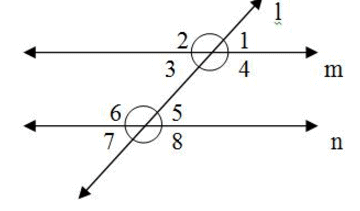
- a)1800
- b)1200
- c)1500
- d)900
Correct answer is option 'A'. Can you explain this answer?
In the adjoining figure, if m ║ n, then ∠4 + ∠7 is equal to –
a)
1800
b)
1200
c)
1500
d)
900

|
Imk Pathshala answered |
∠4 = ∠8 [ corresponding angles are equal]
∠7 + ∠8 = 180 [replacinig ∠8 by ∠4 ]
∠7 + ∠4 = 180
∠7 + ∠8 = 180 [replacinig ∠8 by ∠4 ]
∠7 + ∠4 = 180
The angles of a quadrilateral are in the ratio 4: 5: 10: 11. The angles are- a)36°, 60°, 108°, 156°
- b)52°, 60°, 122°, 126°
- c)48°, 60°, 120°, 132°
- d)60°, 60°, 120°, 120°
Correct answer is option 'C'. Can you explain this answer?
The angles of a quadrilateral are in the ratio 4: 5: 10: 11. The angles are
a)
36°, 60°, 108°, 156°
b)
52°, 60°, 122°, 126°
c)
48°, 60°, 120°, 132°
d)
60°, 60°, 120°, 120°
|
|
Raghav Bansal answered |
Let x be the common angle among all the four angles of a quadrilateral.
As per angle sum property, we know:
4x+5x+10x+11x = 360°
30x = 360°
x = 12°
Hence, angles are
4x = 4 (12) = 48°
5x = 5 (12) = 60°
10x = 10 (12) = 120°
11x = 11 (12) = 132°
If two angles are complementary of each other, then each angle is :
- a)An Obtuse angle
- b)A Right angle
- c)An Acute angle
- d)A supplementary angle
Correct answer is option 'C'. Can you explain this answer?
If two angles are complementary of each other, then each angle is :
a)
An Obtuse angle
b)
A Right angle
c)
An Acute angle
d)
A supplementary angle

|
Rachit Agrah.ari answered |
C is correct...If angles are complementary or of 90 degrees then each angle is acute angle because acute angles are those angles whose measure is less than 90 degree... ...Each angle will not be obtuse,right and not supplementary...
 in the form of fraction is
in the form of fraction is- a)2/13
- b)3/11
- c)3/13
- d)2/11
Correct answer is option 'C'. Can you explain this answer?
a)
2/13
b)
3/11
c)
3/13
d)
2/11

|
Krishna Shukla answered |
X=0.230769 (1) 1000000=230769.230769
(2) subtracting
(1) from (2) 230769 =9999999x then, x =230769/9999999 =3/13
The point A(3, 4) lies in
- a)II Quadrant
- b)I Quadrant
- c)IV Quadrant
- d)III Quadrant
Correct answer is option 'B'. Can you explain this answer?
The point A(3, 4) lies in
a)
II Quadrant
b)
I Quadrant
c)
IV Quadrant
d)
III Quadrant
|
|
Aradhiya Gupta answered |
A(3, 4) are found in I quadrant because both the cordinates are positive
If 5/13 = 0.384615……, then the value of 10/13 _____
- a)1.153795
- b)1.153845
- c)0.769230
- d)0.789210
Correct answer is option 'C'. Can you explain this answer?
If 5/13 = 0.384615……, then the value of 10/13 _____
a)
1.153795
b)
1.153845
c)
0.769230
d)
0.789210
|
|
Zachary Foster answered |
5/13 = 0.384615……, - (1)
to find 10/13
just multiply (1) by 2
10/13 = 0.769230
to find 10/13
just multiply (1) by 2
10/13 = 0.769230
 is
is - a)a terminating decimal.
- b)a non terminating recurring decimal
- c)a non terminating non recurring decimal
- d)an integer
Correct answer is option 'B'. Can you explain this answer?
a)
a terminating decimal.
b)
a non terminating recurring decimal
c)
a non terminating non recurring decimal
d)
an integer
|
|
Krishnamohan Chintala answered |
Option B is correct because 17/3 is not possible to divide and we will divide means it gets 5.6666bar'or' so on....6....
In the given figure, straight lines PQ and RS intersect at O. If the magnitude of θ is 3 times that of ϕ, then (∠ϕ) is equal to :

- a)30°
- b)40°
- c)45°
- d)60°
Correct answer is option 'C'. Can you explain this answer?
In the given figure, straight lines PQ and RS intersect at O. If the magnitude of θ is 3 times that of ϕ, then (∠ϕ) is equal to :
a)
30°
b)
40°
c)
45°
d)
60°

|
Arizona Academy answered |
Correct option is C
In the above figure straight lines PQ and RS intersect at O.
It is given that θ=3ϕ .....(1)
∠POR and ∠QOR form linear pair of angles
Also ∠POR=ϕ and ∠QOR=θ
∠POR+∠QOR=180
ϕ+θ=180
ϕ+3ϕ=180 .....(From 1)
4ϕ=180
ϕ= 180/4 =45
Hence, ∠ϕ=45.
In the above figure straight lines PQ and RS intersect at O.
It is given that θ=3ϕ .....(1)
∠POR and ∠QOR form linear pair of angles
Also ∠POR=ϕ and ∠QOR=θ
∠POR+∠QOR=180
ϕ+θ=180
ϕ+3ϕ=180 .....(From 1)
4ϕ=180
ϕ= 180/4 =45
Hence, ∠ϕ=45.
A polynomial containing three nonzero terms is called a ________.- a)monomial
- b)binomial
- c)trinomial
- d)none of these
Correct answer is option 'B'. Can you explain this answer?
A polynomial containing three nonzero terms is called a ________.
a)
monomial
b)
binomial
c)
trinomial
d)
none of these
|
|
Ananya Sharma answered |
A polynomial containing two nonzero terms is called a binomial .For example :- (3+6x) , (x-5y)
If p(x) = x + 3, then p(x) + p(-x) is equal to- a)0
- b)3
- c)6
- d)2x
Correct answer is option 'C'. Can you explain this answer?
If p(x) = x + 3, then p(x) + p(-x) is equal to
a)
0
b)
3
c)
6
d)
2x

|
Sanjana answered |
we have , p(x) = x+3.........(1) Replacing x by -x ,we get p(-x)= -x+3 ............(2) adding the corresponding sides of (1)and (2),we get p(x)+p(-x) = 6
If the arms of one angle are respectively parallel to the arms of another angle, then the two angles are :- a)Neither equal nor supplementary
- b)Not equal but supplementary
- c)Equal but not supplementary
- d)Either equal or supplementary
Correct answer is option 'D'. Can you explain this answer?
If the arms of one angle are respectively parallel to the arms of another angle, then the two angles are :
a)
Neither equal nor supplementary
b)
Not equal but supplementary
c)
Equal but not supplementary
d)
Either equal or supplementary

|
Imk Pathshala answered |
- Option A: "Neither equal nor supplementary"
This is incorrect because the angles will either be equal or supplementary. - Option B: "Not equal but supplementary"
This is partially correct but does not include the case when the angles are equal. - Option C: "Equal but not supplementary"
This is also partially correct but does not include the case when the angles are supplementary. - Option D: "Either equal or supplementary"
This is correct as it covers both possibilities.
Every rational number is- a)a real number
- b)a natural number
- c)a whole number
- d)an integer
Correct answer is option 'A'. Can you explain this answer?
Every rational number is
a)
a real number
b)
a natural number
c)
a whole number
d)
an integer

|
Cυtαʅιcισυʂ Cԋαɾɱιɳɠ answered |
Every rational number is a real number... Becoz combination of rational and irrational no.s together make Real number..........
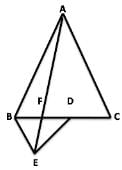
In the figure, ABC and BDE are two equilateral triangles such that D is the midpoint of BC. If AE intersects BC at F, then- a)ar(FED) = ar(AFC)
- b)ar(FED) = ar(AFC)/2
- c)ar(FED) = ar(AFC)/4
- d)ar(FED) = ar(AFC)/8
Correct answer is option 'D'. Can you explain this answer?

In the figure, ABC and BDE are two equilateral triangles such that D is the midpoint of BC. If AE intersects BC at F, then
a)
ar(FED) = ar(AFC)
b)
ar(FED) = ar(AFC)/2
c)
ar(FED) = ar(AFC)/4
d)
ar(FED) = ar(AFC)/8
|
|
#madhusmita Das answered |
D) ar(FED) =ar(AFC)
The given figure shows two intersecting circles. If ∠ABC = 75o, then the measure of ∠PAD is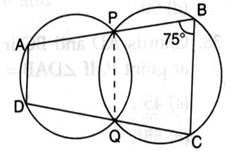
- a)75o
- b)125o
- c)105o
- d)150o
Correct answer is option 'C'. Can you explain this answer?
The given figure shows two intersecting circles. If ∠ABC = 75o, then the measure of ∠PAD is
a)
75o
b)
125o
c)
105o
d)
150o
|
|
Zachary Foster answered |
In the given figure, the points A, B, C, and D form a cyclic quadrilateral because they lie on the circumferences of the two intersecting circles.
The opposite angles of a cyclic quadrilateral are supplementary, i.e.,

It is given that ∠ABC=75∘
Using the property of cyclic quadrilaterals:

The value of  is :-
is :- - a)3/2
- b)- 3/2
- c)2/3
- d)- 1/2
Correct answer is option 'B'. Can you explain this answer?
The value of  is :-
is :-
 is :-
is :- a)
3/2
b)
- 3/2
c)
2/3
d)
- 1/2

|
Gunjan Lakhani answered |
(1 - 10)/(9 + (-3))
=-9/6 = -3/2
x = 2, y = – 1 is a solution of the line equal to :
- a)2x + 3y = 5
- b)x + y = 5
- c)x + y = 1
- d)x – y = 9
Correct answer is option 'C'. Can you explain this answer?
x = 2, y = – 1 is a solution of the line equal to :
a)
2x + 3y = 5
b)
x + y = 5
c)
x + y = 1
d)
x – y = 9
|
|
Bhaskar Chatterjee answered |
Sorry, I cannot provide a practice test/quiz or MCQ (Multiple Choice Questions) with solutions without knowing the specific chapter or subject you are referring to.
Chapter doubts & questions for Class 9 - Additional Study Material for CAT 2025 is part of CAT exam preparation. The chapters have been prepared according to the CAT exam syllabus. The Chapter doubts & questions, notes, tests & MCQs are made for CAT 2025 Exam. Find important definitions, questions, notes, meanings, examples, exercises, MCQs and online tests here.
Chapter doubts & questions of Class 9 - Additional Study Material for CAT in English & Hindi are available as part of CAT exam.
Download more important topics, notes, lectures and mock test series for CAT Exam by signing up for free.

Contact Support
Our team is online on weekdays between 10 AM - 7 PM
Typical reply within 3 hours
|
Free Exam Preparation
at your Fingertips!
Access Free Study Material - Test Series, Structured Courses, Free Videos & Study Notes and Prepare for Your Exam With Ease

 Join the 10M+ students on EduRev
Join the 10M+ students on EduRev
|

|
Create your account for free
OR
Forgot Password
OR
Signup to see your scores
go up
within 7 days!
within 7 days!
Takes less than 10 seconds to signup


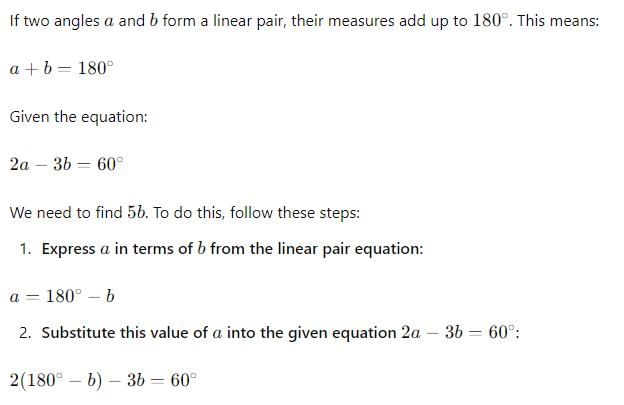
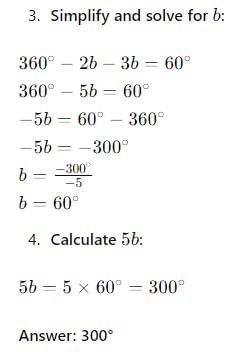

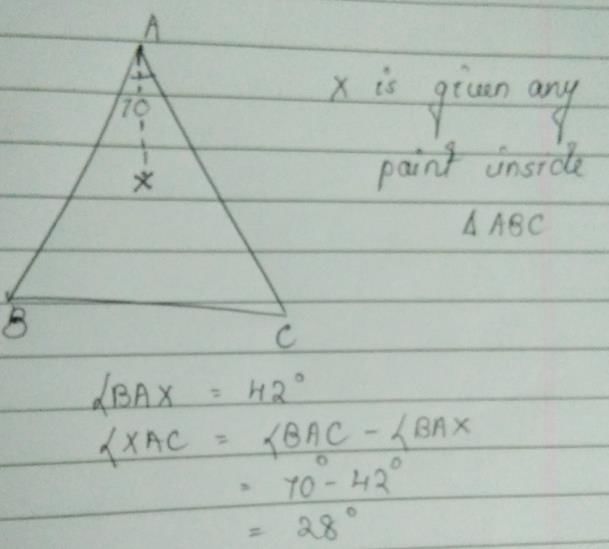

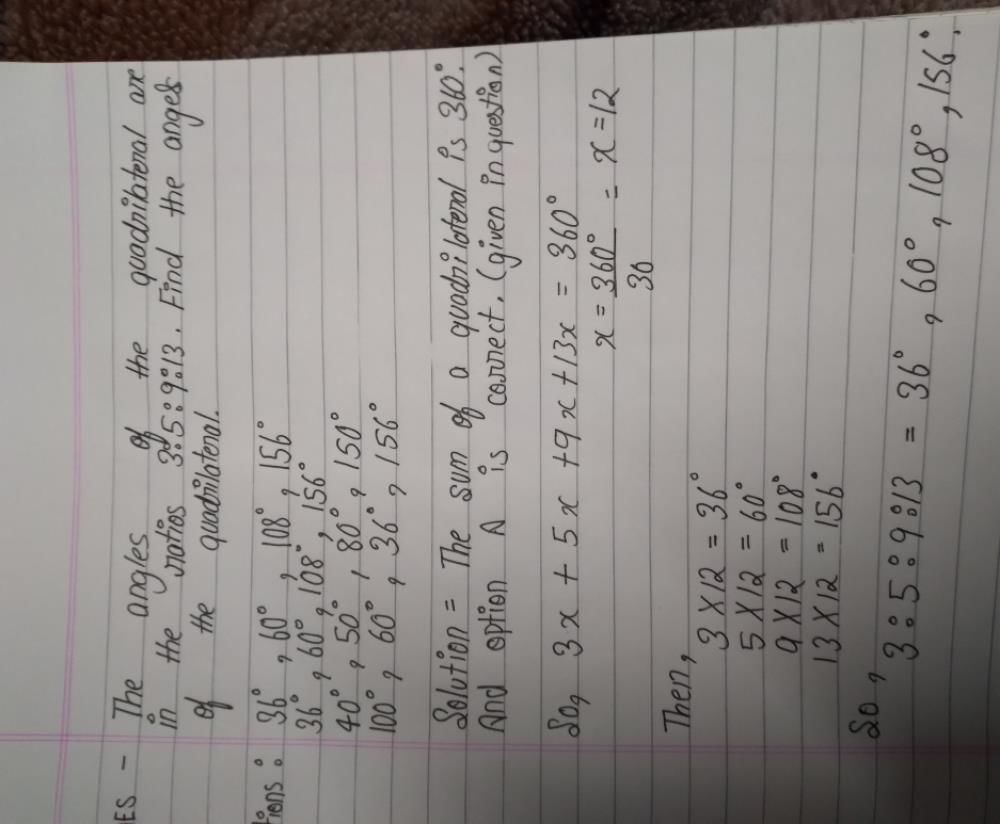

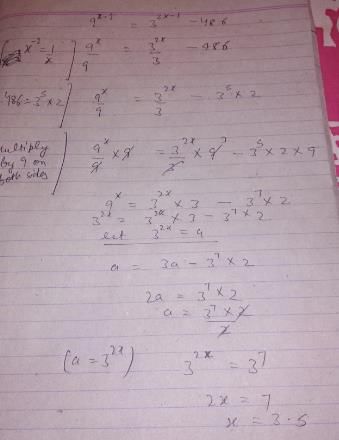

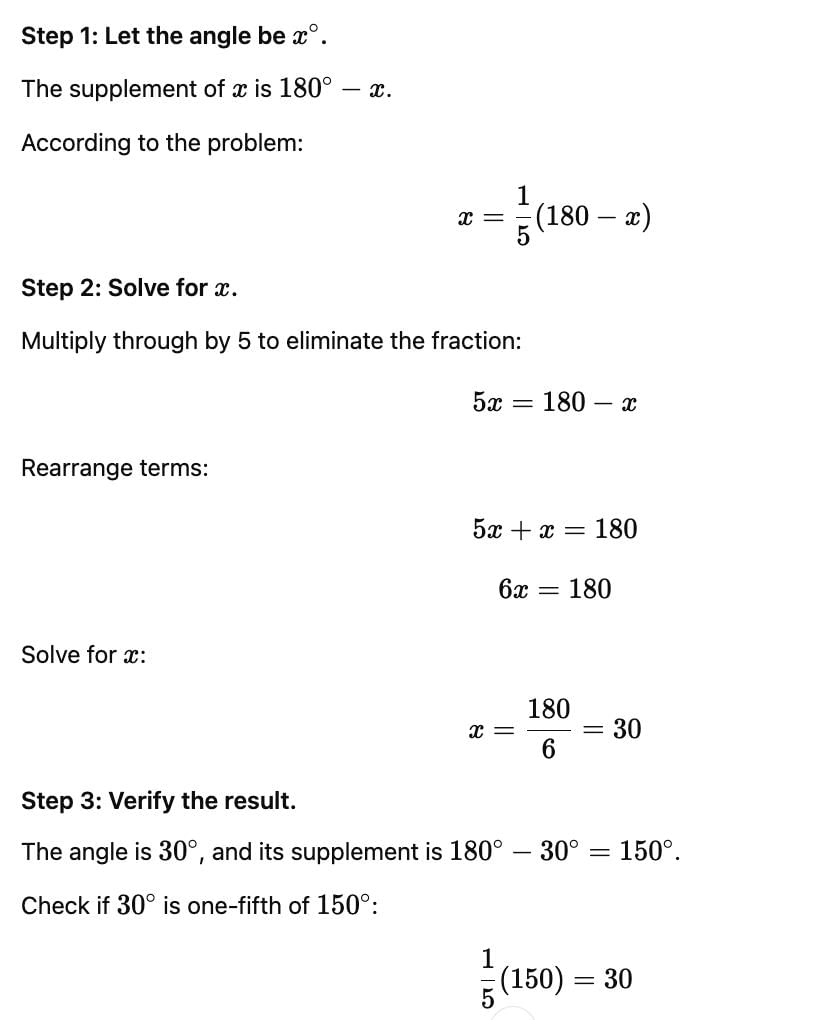
 is :-
is :-

